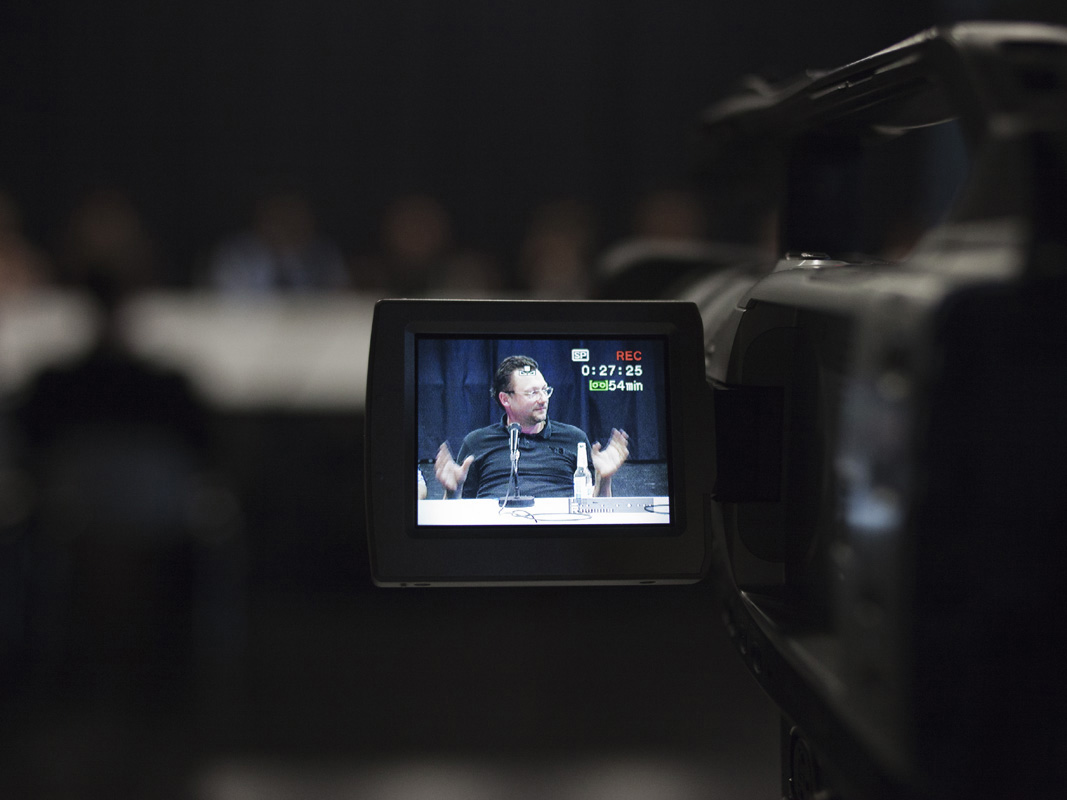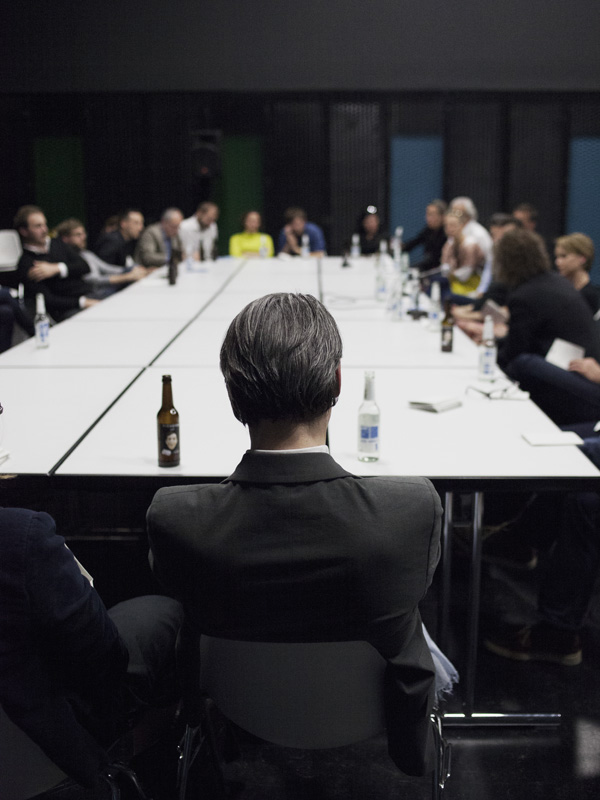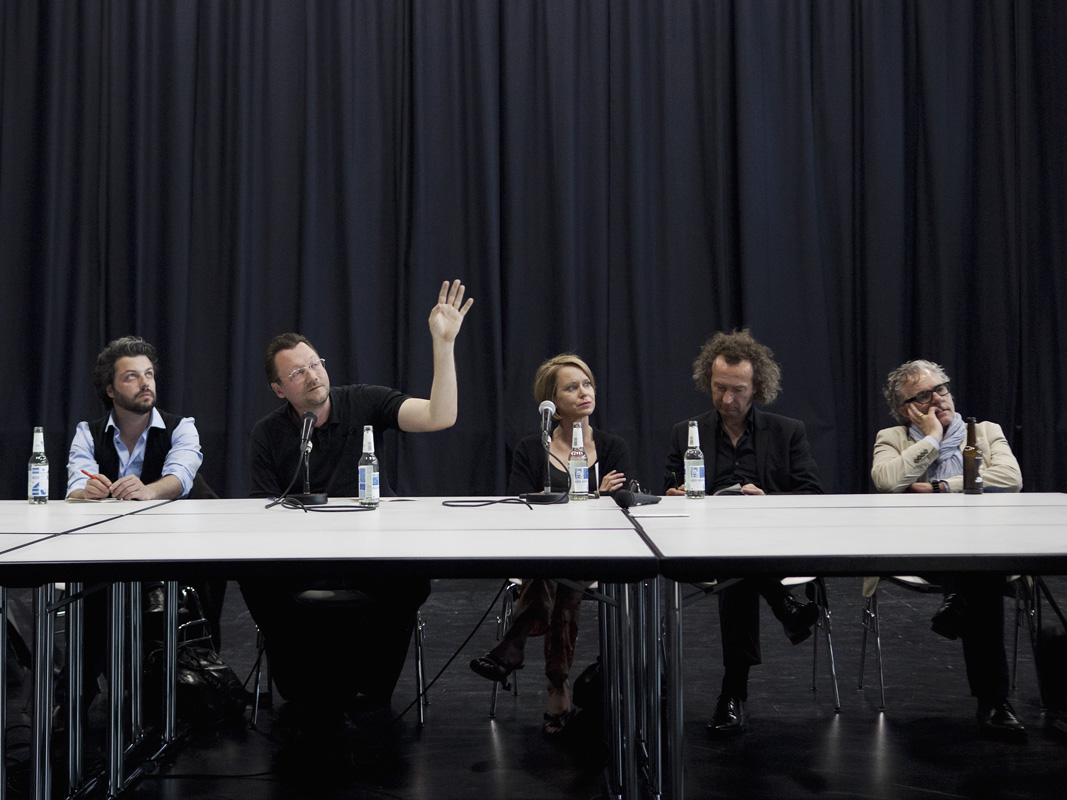
MUCK PETZET
Now is tomorrow /
Bauen im Bestand
WEDNESDAY, MAY 23, 2012
STATEMENT
ARCHITEKTUR ALS RESSOURCE
Die Arbeit mit dem Gebäudebestand ist zur größten Bauaufgabe in Deutschland geworden: Es findet ein großmaßstäblicher Umverteilungs- und Umwertungsprozess statt: Einige wenige Metropolen wachsen noch ungebremst, die Mehrzahl der Städte schrumpft, Ränder und Rand-Regionen entvölkern sich zunehmend. Es gibt ein Zuviel an Architektur, Schrumpfung ist zur Planungsaufgabe geworden und auch da wo noch Wachstum ist gibt es keine Tabula Rasa. Es geht um Verdichtung, Ergänzung und das Füllen von Lücken im Gewebe der Städte.
Der Umgang mit dem Bestand ist entscheidend für unsere Zukunft. Die Klimaziele können nur durch die Verbesserung des Bestandes und die Erneuerung bestehender Infrastruktur erreicht werden. Doch der größte zur Sanierung anstehende Gebäudebestand – die Nachkriegsbauten der 50er bis 70er Jahre – gilt als problematisch: Die Gebäude scheinen zu unpassend / zu ärmlich und energetisch zu mangelhaft zu sein um uns in der Zukunft noch als Behausung zu dienen.
Wo wirtschaftlich vertretbar – werden ‚veraltete’ Gebäude und Siedlungen abgerissen und durch neue ersetzt. Die ‚graue‘ – in den Gebäuden und Materialien gespeicherte Energie wird bei der energetischen
Bewertung der Maßnahmen nicht berücksichtigt und bei den Abbrüchen bedenkenlos freigesetzt.
Auch wenn die Gebäude ‚energetisch saniert’ werden stehen wirtschaftliche und technische Faktoren im Vordergrund. Dieses Arbeitsfeld wird nicht als interessante architektonische Aufgabe begriffen. Die auf ‚Energieeinsparung’ ausgerichtete Sanierung der Gebäude führt meist zum Totalverlust der vorhandenen Qualitäten.
Dabei führen affirmative Transformationsstrategien viel effektiver und wirtschaftlicher zum Erfolg: wenn vorhandene Qualitäten erkannt und weiterentwickelt werden ist der Änderungsbedarf und damit der Aufwand viel geringer.
Abriss und Neubau können eine gute Alternative sein – aber auch eine Anpassung des Raumprogramms an vorhandenen Gegebenheiten – oder die Suche einer geeigneten leerstehenden Struktur für eine neue Nutzung. Die Sperrigkeit des Bestandes kann auch Inspiration zu neuen Lösungen sein.
—
ARCHITECTURE AS A RESOURCE
Working with existing building stock has become the most extensive construction project facing Germany. A process of redistribution and reevaluation is taking place on a vast scale. While a few major cities are still experiencing unchecked growth, the majority of towns and cities are shrinking and their outskirts and peripheries are becoming increasingly depopulated.
Architecture is present to excess, shrinkage has become a planning parameter, and not even areas of continued growth are a tabula rasa. The key issues are compression, addition and filling gaps in the fabric of our cities.
The way in which we treat existing building stock is critical for our future. Climate-change targets can only be achieved by improving building stock and renewing existing infrastructure. But the largest category of building stock facing renovation – the post-war architecture of the 1950s to 1970s – poses many problems. Today we perceive these buildings as too inappropriate, too meagre and too energy-inefficient for them to continue to serve us as homes in the future.
Wherever it is economically viable, ‚obsolete‘ buildings and estates are demolished and replaced by new ones. The ‚grey‘ energy stored in the buildings and materials is not considered in evaluations of the energy-related consequences of these activities, and is thoughtlessly dissipated during demolition. Even if buildings receive ‚eco-refurbishment‘, primary consideration is still reserved for economic and technical factors. This field is not regarded as a fascinating architectural challenge. Renovation of buildings where ‚saving energy‘ is the objective generally leads to complete destruction of the buildings‘ existing qualities.
Affirmative, transformative strategies represent far more effective and economical routes to success: when existing qualities are identified and developed further, there is a far lower need for change – and, likewise, far lower associated efforts and costs.
Demolition and rebuilding can be a useful course of action - yet so can alignment of spatial utilization programmes to existing conditions, or the search for a suitable vacant structure to undergo a new use. In fact, the awkwardness or unwieldiness of existing building stock may also serve as an inspiration for new solutions.
VIDEO
RESOURCES
Ressourcen sind Mittel, Quellen, Reichtümer und Möglichkeiten. Eine reflektierte Haltung dem gegenüber, was uns umgibt, betrifft die menschlichen, geistigen und materiellen Ressourcen. Nicht nur ökonomische und ökologische, sondern auch gesellschaftspolitische Auswirkungen stehen auf dem Spiel.
In unserer unmittelbaren Umgebung ist vieles vorhanden, das anders genutzt, anders aufbereitet werden kann. Beim Umbau unserer Städte kann anstelle der Logik von Abriss und Neubau, das Weiterbauen der existierenden Substanz eine Alternative sein. Im urbanen Raum müssen viele Strukturen neu betrachtet und verwertet, neue Formate müssen gefunden werden.
Nicht zurück zu einer alten, sondern hin zu einer neuen Einfachheit – darum geht es uns, um Rücksicht im Umgang mit bestehenden Bauten bzw. Bauen im Bestand, Verantwortung gegenüber der Natur und dem Menschen, Aufmerksamkeit jeglicher Gegebenheiten vor Ort. Dies sind Leitbilder dieses Themenschwerpunktes.
Wir wollen einen Blick in die Zukunft wagen. Durch den inflationären Gebrauch des Begriffes der Nachhaltigkeit ist eine Diskussion darüber jedoch schwierig geworden. Dennoch versuchen wir durch Einladung von Experten, verschiedene Facetten des Themas Ressource zu ergründen. Ziel ist es neue Denkräume zu öffnen, neue Methoden zuzulassen, andere Wege zu beschreiten – im alltäglichen Handeln, durch neue technologische Mittel, durch ein Umdenken...
Wir freuen uns sehr diesen neuen Q+A Themenschwerpunkt mit dem Architekten Muck Petzet beginnen zu können. Er wird uns als Experte für das Bauen im Bestand einen ersten Einblick in die Theorie und Praxis des Themas ermöglichen. Passenderweise findet der Abend in einem von seinem Architekturbüro sanierten Gebäude statt. Einem Bau der Nachkriegsmoderne – der Mensa der Olympiade von 1972.
–
Resources are means, sources, riches and opportunities. The adoption of a reflective attitude towards what is all around us, what is already there, is to address human, intellectual and material resources. What is at stake here spans not only economic and ecological consequences, but also socio-political impacts.
Our immediate environment yields many things that can be used differently, treated and processed differently. In rebuilding our cities we may choose to continue building on existing fabric as an alternative to the logic of demolition and reconstruction. Within an urban space many structures must be reappraised and re-evaluated, and new formats sought and found.
Instead of returning to an old state of simplicity, a move forward into a new simplicity, or normality – this is our core issue: care and consideration in dealing with existing buildings or renovation within existing architectural contexts; responsibility towards nature and humanity; attention to all kinds of specific local conditions. These are the guiding principles of our featured topic.
We aim to examine the future. However, the term ‚sustainability‘ has been used so excessively that it has hampered debate on the subject. Nevertheless, our goal is to examine various facets of the topic of ‚resources‘ by inviting experts to debate the issue, with the aim of opening up new avenues of thought, allowing new methods, taking new routes – in our daily actions, by the use of new technologies, by rethinking…
We are delighted to open this new Q+A topic by introducing the architect Muck Petzet. An expert on building redevelopment, he will provide us with initial insights into the theory and practice of the subject. Appropriately, the venue for the evening is a building that stems from the post-war modernist era and was refurbished by Muck Petzet‘s architects‘ office – the former canteen of the 1972 Olympic Games.





QUESTIONS
Was ist „graue“ Energie?
What is ‚grey‘ energy?
Was sind affirmative
Transformationsstrategien?
What are affirmative
transformative strategies?
Was steckt im Bestand,
welches Potential birgt
ein Gebäude?
What does existing
building stock have to
offer, what potential
does it contain?
Was passiert in
wachsenden, was in
schrumpfenden Städten?
What exactly happens
in cities that are
experiencing growth, and
in those that are shrinking?
Unter ökologischen
Gesichtspunkten – was ist
besser, neu oder alt?
From an ecological
viewpoint, what is
better – old or new?
Stimmt es, dass
60% des Abfalls von
der Bauindustrie
produziert wird?
Is it true that 60%
of all waste is
produced by the
construction industry?
Ist der Erhalt jeden
Bestandes nicht ein
Luxusproblem?
Isn‘t the idea of
preserving all existing
building stock simply
a luxury problem?
Was ist unsichtbare
Architektur?
What is invisible
architecture?
Wieso unterscheidet man
nur in Deutschland
zwischen Alt- und Neubau?
Why is Germany the
only country to make
the distinction between old
buildings and new buildings –
„Altbau“ and „Neubau“?
Seit wann gibt es den
Ausdruck „kaputtsanieren“?
Und was bedeutet dieser
für die deutsche Baukultur?
When did the expression
„kaputtsanieren“, „to
redevelop a building to
death“, come into use?
And what is its
significance for German
architectural culture ?
Ist die Rekonstruktion
einer futuristisch
angelegten Vision
nicht kontraproduktiv?
Isn’t the reconstruction
of a futuristic vision
a contradictory action?
Bedingt eine
Musealisierung der
Städte eine Blockierung
von dynamischen
Entwicklungen?
Does the musealization
of cities represent an
obstacle to dynamic
development?
Entwickelt man bei
der Auseinandersetzung mit
dem Bestand eine gewisse
Retromanie und Nostalgie?
Do people dealing with
existing building stock
tend to develop a certain
retromania and nostalgia?
Wie sieht die Zukunft der
Architekten aus?
What will the future
be like for architects?
Kommt das Ende der
Autoren-Architektur?
Is authorial architecture
on the way out?
Was bedeutet das
alles für die
Architekturausbildung?
What does all this
mean for the study of
architecture?
︎
︎
︎︎︎
PANEL ARCHIVE BY TOPIC
RESOURCES
Panel 24
GIOVANNI VECCHIATO
social coding / spatial coding
2025
—
Panel 22
AIMÉE VAN WYNSBERGHE
AI + Ethics / Der unstillbare Hunger der KI
2024
—
Panel 15
SEMIR ZEKI
Is beauty really subjective and can it be quantified? / Cortex (A1)
2020
—
Panel 12
GIACOMO PIRAZZOLI
Green Up / (Crossinglab.com)
2014
—
Panel 8
MARTINA FINEDER and
THOMAS GEISLER
Design Clinic / Das Papanek Konzept
2012
—
Panel 5
MUCK PETZET
Now is tomorrow / Bauen im Bestand
2012
JAPAN
Panel 9
CHRISTINE VENDREDI-AUZANNEAU and
MARIO CARPO
Identicality
2013
—
Panel 7
TERUNOBU FUJIMORI
Der Zauber des Terunobu Fujimori / International Vernacular
2012
—
Panel 4
MASAMI SAITO and HANNES RÖSLER
The architecture of food / Gebaute Speisen
2011
—
Panel 3
MURIELLE HLADIK and WILFRIED KÜHN
Passage du temps
2011
—
Panel 1
MOMOYO KAIJIMA
Atelier Bow-Wow
2010
︎︎︎
PANEL 24 — Resources
GIOVANNI VECCHIATO
social coding / spatial coding
PANEL 23 — Carte blanche
MARKUS GABRIEL /
JOCELYN MACLURE
A Dinner Party
2.0
PANEL 22 — Resources
AIMÉE VAN WYNSBERGHE
AI + Ethics /
Der unstillbare Hunger der KI
PANEL 21 — Carte blanche
YSC – YOUNG SECURITY
CONFERENCE
Art, War and Revolution /
Ausdrucksformen der Verwüstung
und Genesung
PANEL 20 — Carte blanche
ALEX RÜHLE
Lesung: Europa – wo bist du?
Unterwegs in einem
aufgewühlten Kontinent
PANEL 19 — La Cittá
ELISABETH MERK
ANDREAS HOFER
MICHAEL BUHRS
MARKUS STENGER
Transformation der Orte / What’s your program?
PANEL 3 — Japan
MURIELLE HADIK and
WILFRIED KÜHN
Passage du temps
PANEL 2 — Political Space
SAMIR EL KORDY
and YING ZHOU
Political Space

